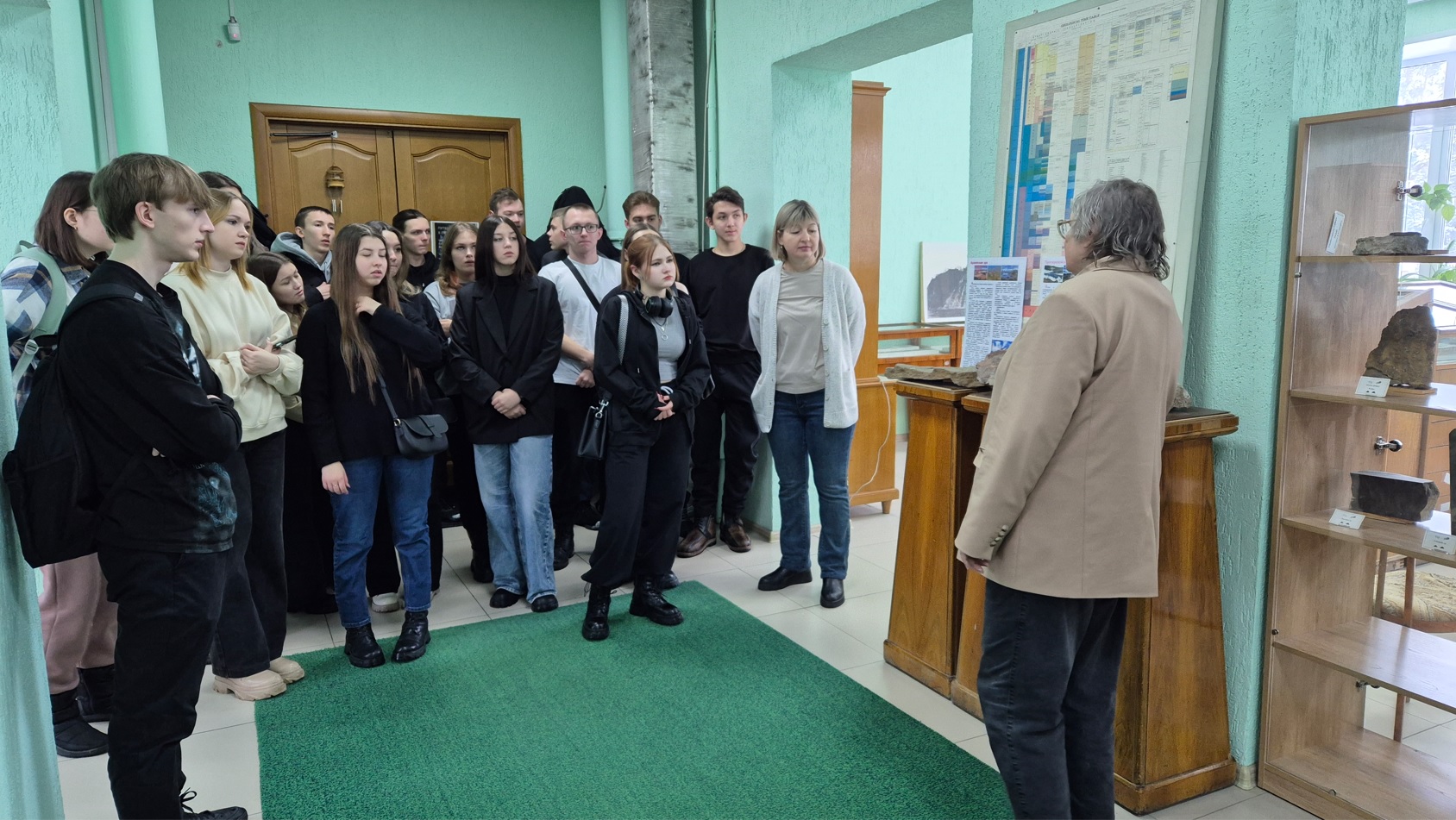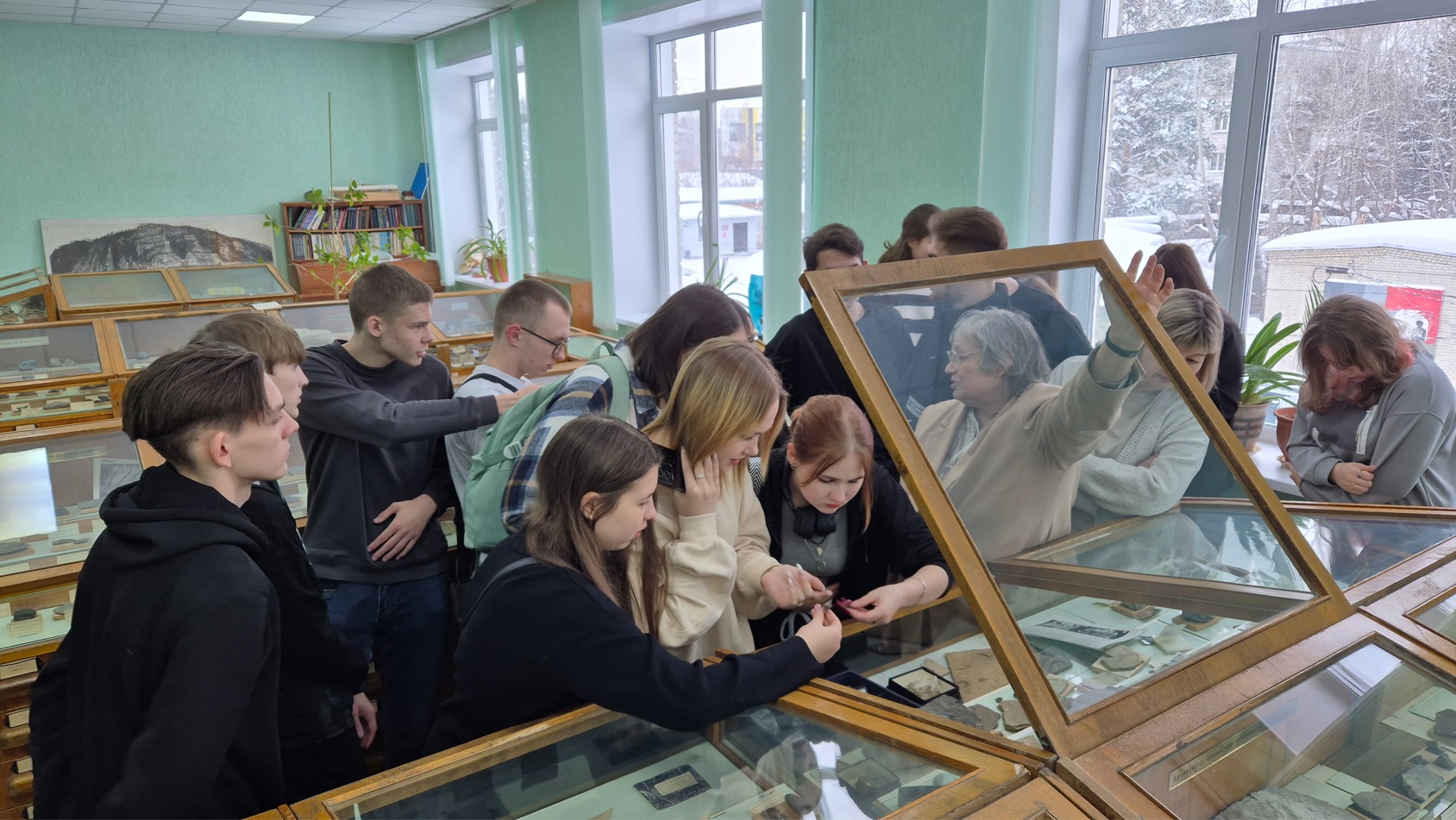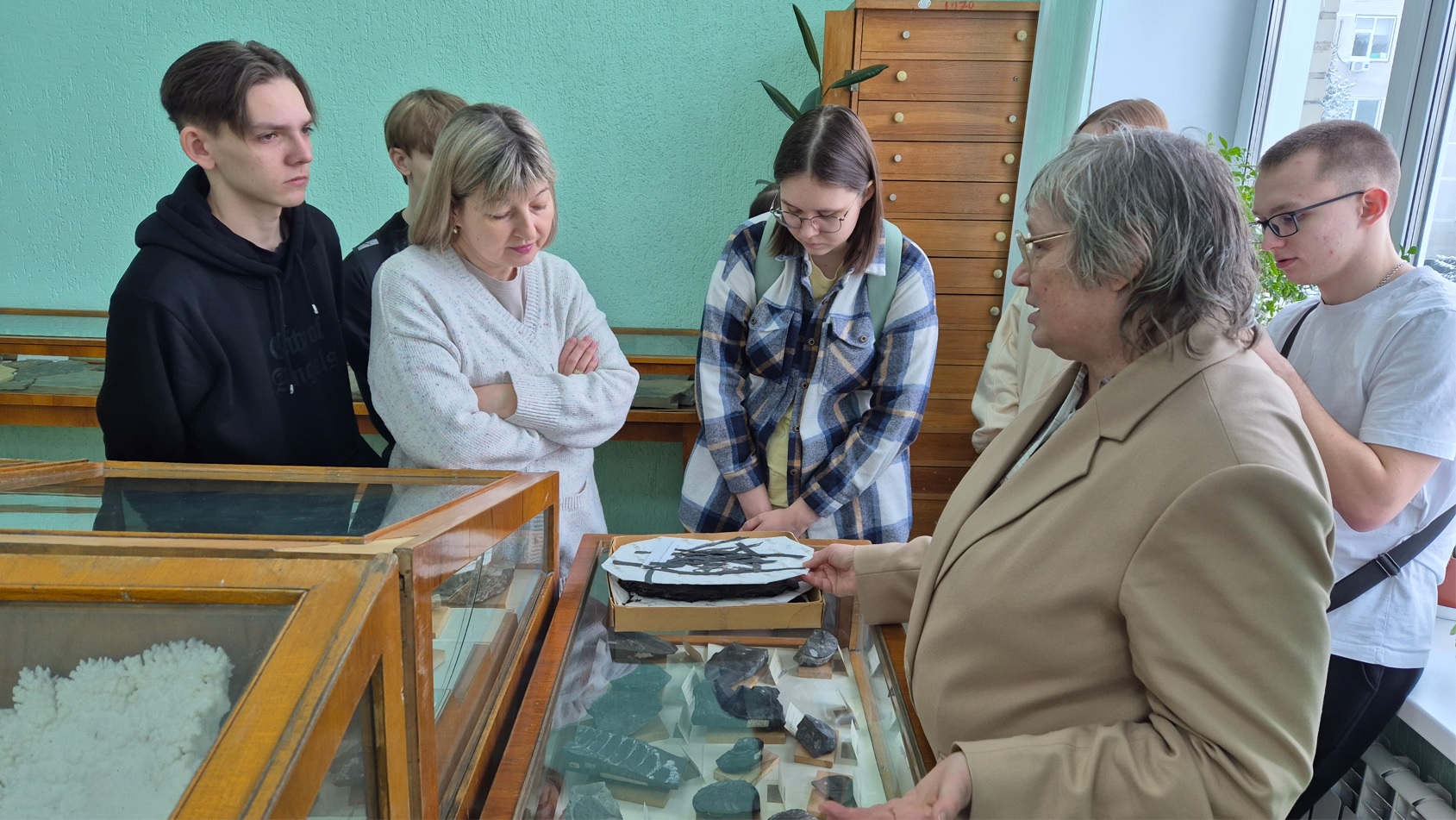The excursions conducted by Olga Rodina, head of the museum, are highly immersive and interesting to both children and adults. The exhibits attract a special interest from young students who are going to engage themselves with Earth sciences. Among the visitors who attended the museum on these festive days were students of Mendeleev Chemical Technology College (Novosibirsk).

Olga Rodina, head of the museum, conducting excursion
The museum's exhibits include more than 500 author's collections of macro- and microfauna of invertebrates, totaling over 50 000 items. Many of them are of high scientific value recognized by the world’s scientists.
Olga Rodina's excursions, which are traditionally interactive for young visitors, become intensively absorbed from the beginning. Some exhibits can be held in hands, giving the visitors the excitement of touching pre-historic objects which are tens and even hundreds of millions of years old.

The GEOCHRON Collection presents macrofauna (ammonoids, corals, belemnites, gastropods, bivalves, brachiopods, trilobites, archaeocytes, vendobionts, etc.), microfauna (foraminifera, ostracods, conodonts, radiolarians, tentaculites), palynomorphs (spores and pollen, dinoflagellate cysts, unicellular algae).
These exhibits have been collected from Russia's vast territories, including the Urals, Siberia, the Far East and the Arctic. The collections reflect the evolution of life on Earth from the Late Precambrian to the present day.

The young visitors were absorbed by the exhibition environment in informal learning settings, while observing various exhibits and listening to the lecture. They asked many questions and thanked Olga Rodina for the interesting excursion.
Published by IPGG Press Service